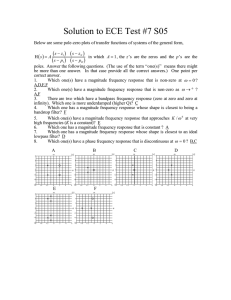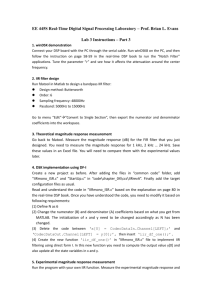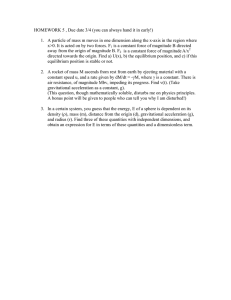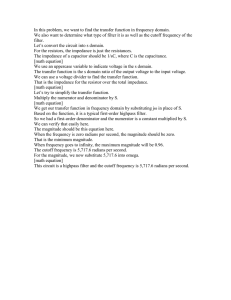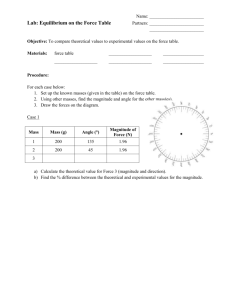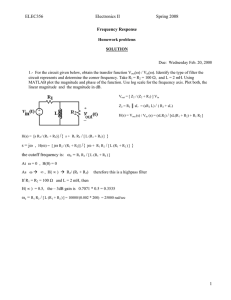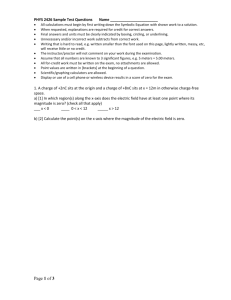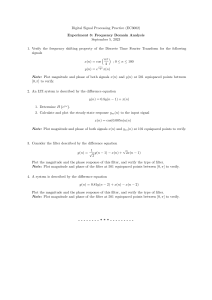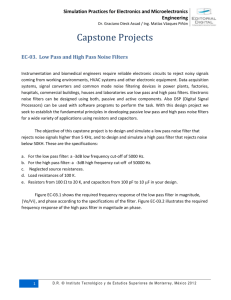List 4 - Rodrigo de Lamare`s website - PUC-Rio
advertisement
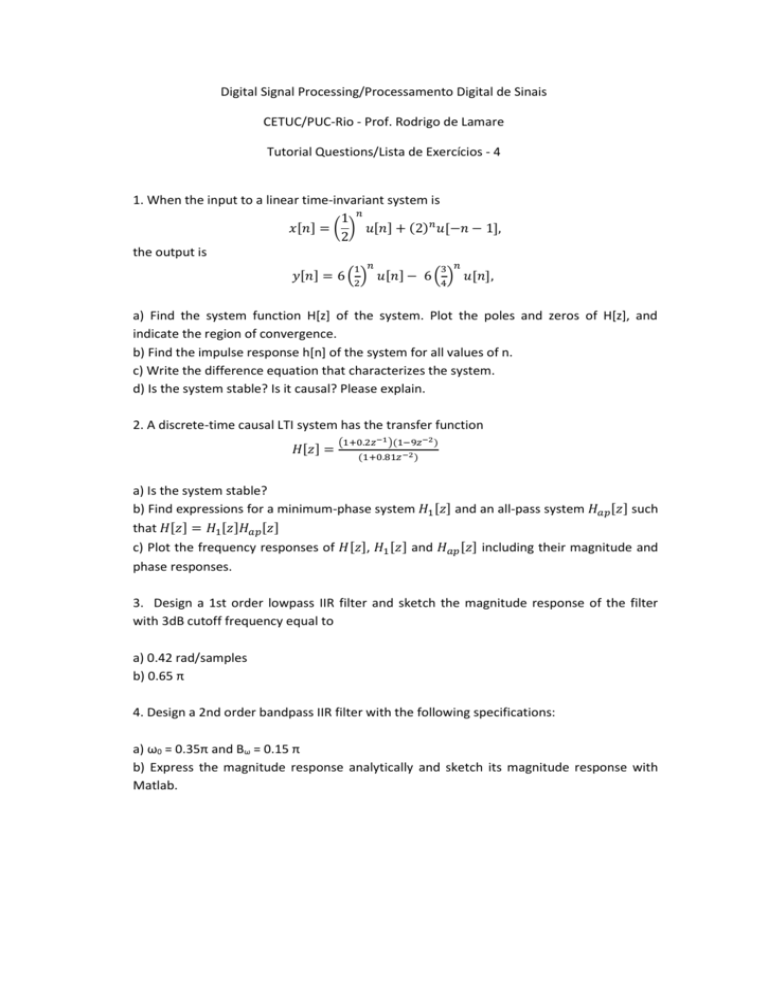
Digital Signal Processing/Processamento Digital de Sinais CETUC/PUC-Rio - Prof. Rodrigo de Lamare Tutorial Questions/Lista de Exercícios - 4 1. When the input to a linear time-invariant system is 1 𝑛 𝑥[𝑛] = ( ) 𝑢[𝑛] + (2)𝑛 𝑢[−𝑛 − 1], 2 the output is 1 𝑛 3 𝑛 𝑦[𝑛] = 6 (2) 𝑢[𝑛] − 6 (4) 𝑢[𝑛], a) Find the system function H[z] of the system. Plot the poles and zeros of H[z], and indicate the region of convergence. b) Find the impulse response h[n] of the system for all values of n. c) Write the difference equation that characterizes the system. d) Is the system stable? Is it causal? Please explain. 2. A discrete-time causal LTI system has the transfer function 𝐻[𝑧] = (1+0.2𝑧 −1 )(1−9𝑧 −2 ) (1+0.81𝑧 −2 ) a) Is the system stable? b) Find expressions for a minimum-phase system 𝐻1 [𝑧] and an all-pass system 𝐻𝑎𝑝 [𝑧] such that 𝐻[𝑧] = 𝐻1 [𝑧]𝐻𝑎𝑝 [𝑧] c) Plot the frequency responses of 𝐻[𝑧], 𝐻1 [𝑧] and 𝐻𝑎𝑝 [𝑧] including their magnitude and phase responses. 3. Design a 1st order lowpass IIR filter and sketch the magnitude response of the filter with 3dB cutoff frequency equal to a) 0.42 rad/samples b) 0.65 π 4. Design a 2nd order bandpass IIR filter with the following specifications: a) ω0 = 0.35π and Bω = 0.15 π b) Express the magnitude response analytically and sketch its magnitude response with Matlab. 5. Consider the filtering structure below a) Determine its impulse response. b) What is the computational cost of this structure? Please explain. 6. An LTI system can be implemented according to the following graph a) Determine the difference equation that corresponds to this graph. b) Compute the transfer function that corresponds to this graph.
